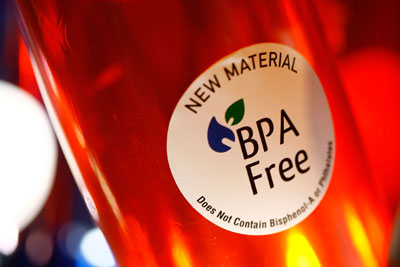Why BPA-Free Products Aren’t Any Better
Bisphenol A (BPA) is being removed from many consumer products, such as household plastics and the linings of metal cans, because of concerns about the chemical’s potential to disrupt the endocrine system. Many manufacturers have replaced it with a chemical known as bisphenol S (BPS). These products are then often labeled as “BPA-free” and presumed to be safer. However, a few scientific studies described below show that BPS is no healthier than BPA. In some cases, it seems it could even be worse.
A recent study by the University of Calgary tested the effects of both BPA and BPS on zebrafish. The fish are widely used by researchers to help understand embryonic brain development. About 80 per cent of the genes found in people have a counterpart in zebrafish, which have very similar developmental processes as humans.
The study found that both BPA and BPS can cause hyperactivity in zebrafish, even at a very low doses of exposure. Zebrafish embryos were exposed to concentrations of the chemicals at levels found in nature (specifically in two Canadian rivers). The exposure to BPA and BPS changed the timing when neurons were formed in the brains of the fish. If too many neurons are created too soon, they can move to the wrong place and can form the wrong circuits. The study found the number of neurons generated in the developing zebrafish brains increased by 180% when exposed to BPA compared with unexposed fish. BPS increased the number of neurons by 240% in similar experiments. The result was a change in behavior — the fish demonstrated greater hyperactivity later in life.
An NIH study, also looked at exposure in zebrafish. Adult zebrafish pairs were exposed to very low levels (0.5 microgram per liter) of BPS for 21 days, and the effects on reproduction were investigated. The result was that egg production in female fish was significantly decreased at extremely low levels of exposure to BPS. In male fish, significant decreases of testosterone concentration were observed. Parental exposure to BPS resulted in delayed and lesser rates of hatching of the next generation. Continuous BPS exposure in the embryos resulted in worse hatchability and increased malformation rates compared to those without BPS exposure.
Finally, a study published in the Journal of Environmental Health Perspectives, showed that BPS has nearly identically negative impacts on the rat cardiovascular system as those previously reported for BPA. The researchers performed back-to-back studies to evaluate the short-term effects of BPA and BPS on rat hearts. In female whole hearts, a low dose of BPS increased the frequency of premature ventricular beats—the most common form of arrhythmia in humans.
Disposable plastic bottles made of polyethylene terephthalate (PET), are also a concern. Another recent NIH study reported a broad contamination of commercially available bottled water with estrogenic activity and presented evidence for the plastic packaging being a source of this contamination. The researchers studied the estrogenic activity of bottled water from France, Germany, and Italy: 11 of the 18 analyzed water samples induced a significant estrogenic response. When comparing water of the same spring that was packed in glass versus plastic bottles, the estrogenic activity was three times higher in water from the plastic bottles. This data supports the hypothesis that PET packaging materials are a source of estrogen-like compounds.
At Sprout, we recommend buying products made of glass, stainless steel, or plastics from a trusted source. We have a great range of Bottles & Sippy Cups, Tableware, Food Storage options, as well as Wood Toys, & safe Plastic Toys. Everything we sell is thoroughly researched and completely safe.


